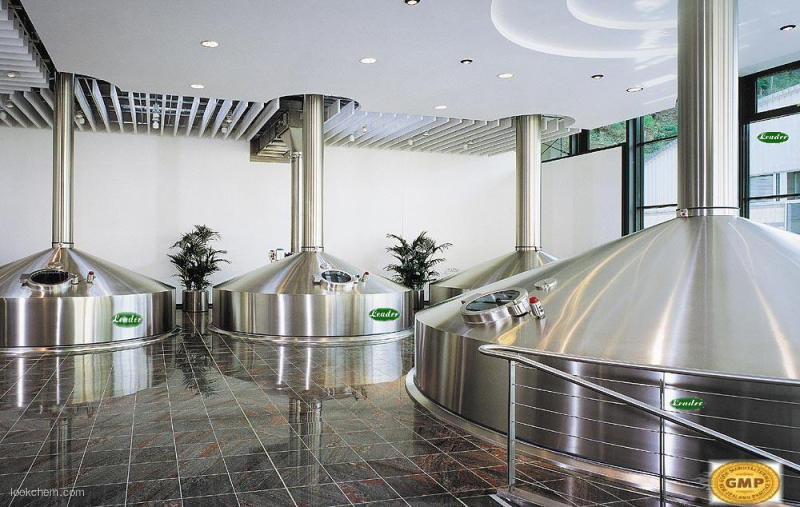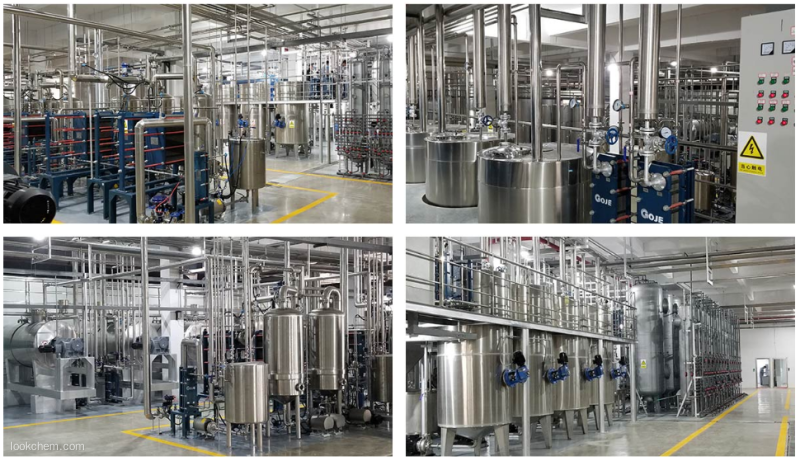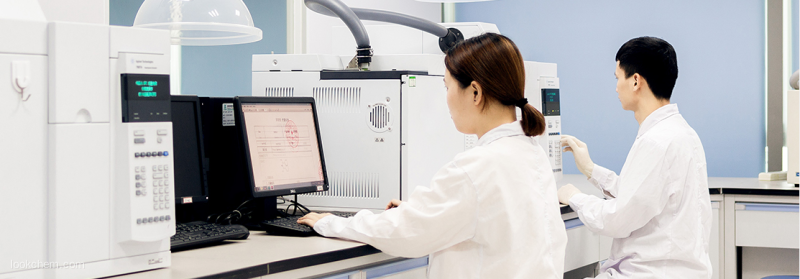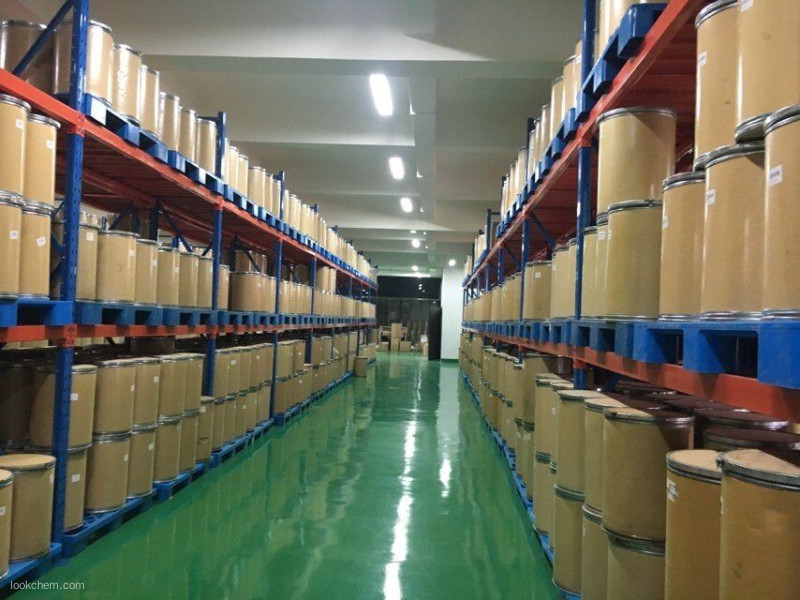PRODUCT DETAILS
| Polydextrose Basic information |
| Product Name: |
Polydextrose |
| Synonyms: |
POLYDEXTROSE;Poly-D-glucose;dextrose/ sorbitol condensation polymer;POLYDEXTROSE,UNTREATED,FCC;Polydextrose solution;Unii-vh2xou12ie;Polydextrose (200 mg);Water-soluble dietary fiber |
| CAS: |
68424-04-4 |
| MF: |
C12H22O11 |
| MW: |
342.29648 |
| EINECS: |
614-467-9 |
| Product Categories: |
Food additive and sweetener |
| Mol File: |
68424-04-4.mol |
 |
| |
| Polydextrose Chemical Properties |
| Melting point |
>130° |
| storage temp. |
4°C, Hygroscopic |
| solubility |
Completely miscible in water. Sparingly soluble to insoluble in most organic solvents. Polydextrose has a higher water solubility than most carbohydrates and polyols, allowing the preparation of 80% w/w solutions at 20°C. Polydextrose is soluble in ethanol and only partially soluble in glycerin and propylene glycol. |
| form |
Solid |
| color |
White to Off-White |
| Stability: |
Hygroscopic |
| |
| Polydextrose Usage And Synthesis |
| Chemical Properties |
Polydextrose occurs as an odorless, off-white to light tan powder with a bland, slightly sweet to slightly tart taste, dependent upon grade. Polydextrose is also available as a clear, light yellow to colorless liquid (70% dry substance), which is odorless with a slightly sweet taste. |
| History |
Polydextrose (PDX) was invented at Pfizer Central Research during the late 1960s, and patented in 1973 (Rennhard 1973). It was originally developed as a reduced calorie (1· kcal/g) replacement for sugar, and partial replacer for fat, fl our and starch. PDX is prepared by vacuum thermal polymerisation of glucose, using sorbitol and an approved food acid as catalyst. Random polymerisation and branching yield various types of glycosidic bonds in the structure (1,6 bonds predominate) (Rennhard 1973; Allingham 1982). A representative structure is shown in Fig. 43.1. Improved versions of PDX (Litesse®) have been patented that utilise ion exchange and hydrogenation, and provide even broader utility in foods (Borden et al. 1997; Guzek et al. 1997a, b).

The structural compactness and complexity of PDX prevents mammalian enzymes from hydrolysing the molecule. This imparts reduced caloric content, as the majority of PDX passes through the stomach and enters the large intestine, whereupon it behaves as a dietary fi bre (Craig et al. 1998). This chapter discusses the physiological benefi ts and analytical measurement of PDX. |
| Uses |
Polydextrose (CAS#68424-04-4) has useful agricultural applications as a bee repellent. It deters honeybees from feeding on insecticide-treated crops. |
| Uses |
Bulking agent for reduced calorie foods. |
| Uses |
Polydextrose is a bulking agent that is a randomly bonded conden- sation polymer of dextrose containing small amounts of bound sor- bitol and citric acid. it is a water-soluble powder providing a ph range of 2.5–3.5. it is partially metabolized which results in a caloric value of 1 cal/g. as a reduced-calorie bulking agent, it can partially replace sugars and in some cases fats in reduced-calorie foods. it also functions as a bodying agent and humectant. applications include desserts, specific baked goods, frozen dairy desserts, chewing gum, and candy. usage levels vary according to application, but examples are frozen dessert, 13–14%; puddings, 8–9%; and cake, 15–16%. |
| Production Methods |
Polydextrose is prepared by the bulk melt polycondensation of glucose and sorbitol in conjunction with small amounts of foodgrade acid in vacuo. Further purification steps are then involved to generate a range of products with improved organoleptic properties by the removal of acidity and flavor notes generated during the condensation reaction. A partially hydrogenated version of polydextrose, which is suited for high inclusion rates, for sugar-free applications, and where Maillard reactions are not required, is also available. |
| Pharmaceutical Applications |
Polydextrose is used in pharmaceutical formulations and food products. In food products it is used as a bulking agent; it also has texturizing and humectant properties. Although polydextrose can be used in a wide range of pharmaceutical formulations, its primary use is in solid-dosage forms.
In tableting, polydextrose solutions are used as binders in wetgranulation processes. Polydextrose is also used in the manufacture of directly compressible tableting excipients. Polydextrose solutions may also be used, in conjunction with other materials, as a film and tablet coating agent.
Polydextrose acts as a bulking agent in the formulation of ‘sugarfree’ confectionery-type dosage forms. In conjunction with isomalt, lactitol, or maltitol, polydextrose can be used in the manufacture of ‘sugar-free’ hard-boiled candies and acacia lozenges or pastilles as a base for medicated confectionery.
The combination of high water solubility and high viscosity of polydextrose facilitates the processing of sugar-free candies of excellent quality. Polydextrose is amorphous and does not crystallize at low temperatures or high concentrations, so it can be used to control the crystallization of polyols and sugars and therefore the structure and texture of the final product. |
| Safety |
Polydextrose is used in oral pharmaceutical applications, food products, and confectionery, and is generally regarded as a relatively nontoxic and nonirritant material.
However, excessive consumption of non-digestible carbohydrates, such as polydextrose, can lead to gastrointestinal distress. After evaluating a series of clinical studies, the Joint FAO/WHO Expert Committee on Food Additives (JECFA) and the European Commission Scientific Committee for Food (EC/SCF) concluded that polydextrose was better tolerated than other digestible carbohydrates such as polyols. The committee concluded that polydextrose has a mean laxative threshold of approximately 90g/day (1.3 g/kg body-weight) or 50g as a single dose.
(mouse, oral): >30 g/kg
(rat, oral): >15 g/kg |
| storage |
Polydextrose powder is hygroscopic and absorbs significant amounts of moisture at relative humidities greater than 60%. Under dry storage conditions, and in original sealed packaging, polydextrose powders can be expected to retain stability for at least 3 years. Solution grades have a shorter shelf-life of 3 to 6 months (dependent upon grade) at an ambient temperature of 25°C, although this can be extended to 12 months through the use of refrigeration.
The bulk material should be stored in a cool, dry place in wellclosed containers. |
| Incompatibilities |
Incompatible with oxidizing agents, strong acids, and alkalis, forming a brown coloration and depolymerizing. |
| Regulatory Status |
Approved as a food additive in over 60 countries worldwide, including Europe and the USA. Included in the FDA Inactive Ingredients Database (oral tablets). Included in non-parenteral medicines licensed in the UK. Included in the Canadian List of Acceptable Non-medicinal Ingredients. |
| |
| Polydextrose Preparation Products And Raw materials |
|
|
|
|
|
|
About Our Group
Leader Biochemical Group is a large leader incorporated industry manufacturers and suppliers of advanced refined raw materials From the year of 1996 when our factory was put into production to year of 2020, our group has successively invested in more than 52 factories with shares and subordinates.We focus on manufacture Pharm & chemicals, functional active ingredients, nutritional Ingredients, health care products, cosmetics, pharmaceutical and refined feed, oil, natural plant ingredients industries to provide top quality of GMP standards products.All the invested factories' product lines cover API and intermediates, vitamins, amino acids, plant extracts, daily chemical products, cosmetics raw materials, nutrition and health care products, food additives, feed additives, essential oil products, fine chemical products and agricultural chemical raw materials And flavors and fragrances. Especially in the field of vitamins, amino acids, pharmaceutical raw materials and cosmetic raw materials, we have more than 20 years of production and sales experience. All products meet the requirements of high international export standards and have been recognized by customers all over the world. Our manufacture basement & R&D center located in National Aerospace Economic & Technical Development Zone Xi`an Shaanxi China. Now not only relying on self-cultivation and development as well as maintains good cooperative relations with many famous research institutes and universities in China. Now, we have closely cooperation with Shanghai Institute of Organic Chemistry of Chinese Academy of Science, Beijing Institute of Material Medical of Chinese Academy of Medical Science, China Pharmaceutical University, Zhejiang University. Closely cooperation with them not only integrating Science and technology resources, but also increasing the R&D speed and improving our R&D power. Offering Powerful Tech supporting Platform for group development. Keep serve the manufacture and the market as the R&D central task, focus on the technical research. Now there are 3 technology R & D platforms including biological extract, microorganism fermentation and chemical synthesis, and can independently research and develop kinds of difficult APIs and pharmaceutical intermediates. With the strong support of China State Institute of Pharmaceutical Industry (hereinafter short for CSIPI), earlier known as Shanghai Institute of Pharmaceutical Industry (SIPI), we have unique advantages in the R & D and industrialization of high-grade, precision and advanced products. Now our Group technical force is abundant, existing staff more that 1000 people, senior professional and technical staff accounted for more than 50% of the total number of employees, including 15 PhD research and development personnel, 5 master′ S degree in technical and management personnel 9 people. We have advanced equipment like fermentation equipment and technology also extraction, isolation, purification, synthesis with rich production experience and strict quality control system, According to the GMP required, quickly transforming the R&D results to industrial production in time, it is our advantages and our products are exported to North and South America, Europe, Middle East, Africa, and other five continents and scale the forefront in the nation, won good international reputation. We believe only good quality can bring good cooperation, quality is our key spirit during our production, we are warmly welcome clients and partner from all over the world contact us for everlasting cooperation, Leader will be your strong, sincere and reliable partner in China.
Our Group profiles
Our Factories production lines



Our Factories R&D ability


Our Factories warehouse




 Premiumsupplier
Premiumsupplier 



